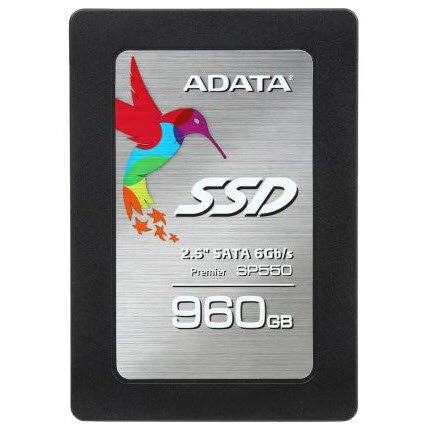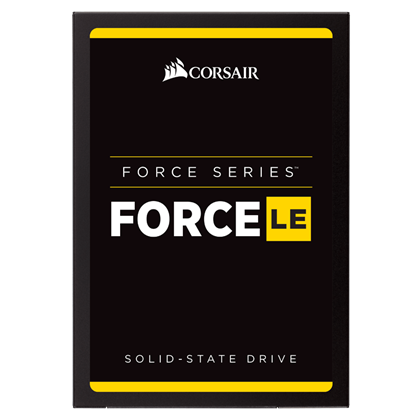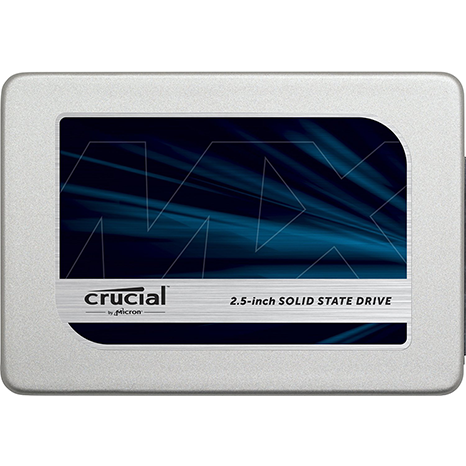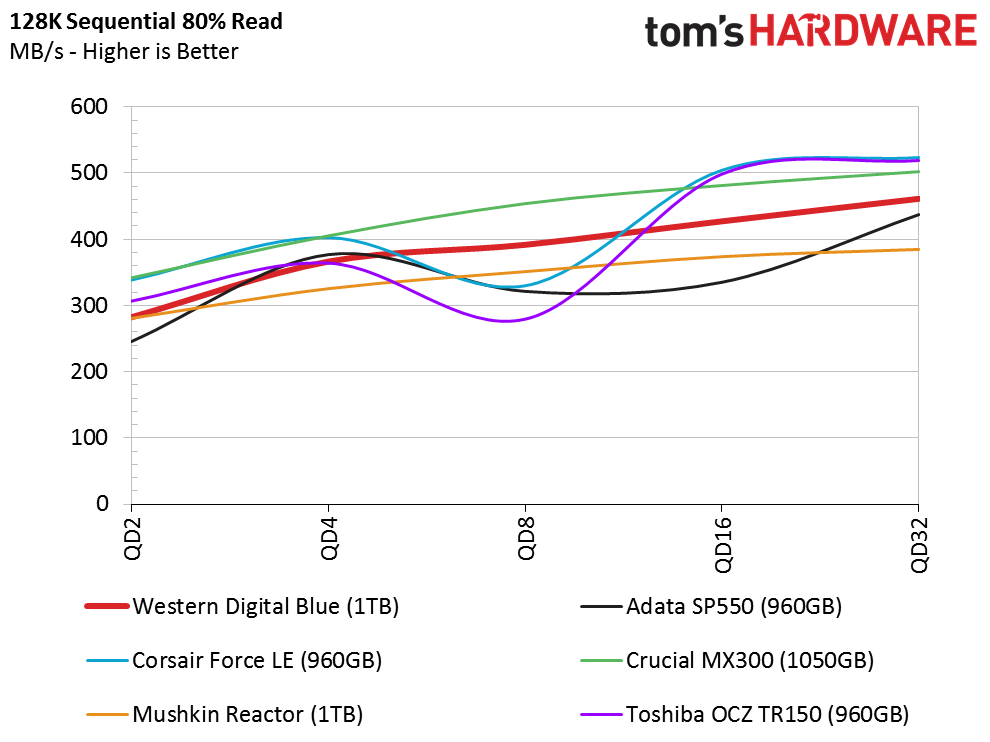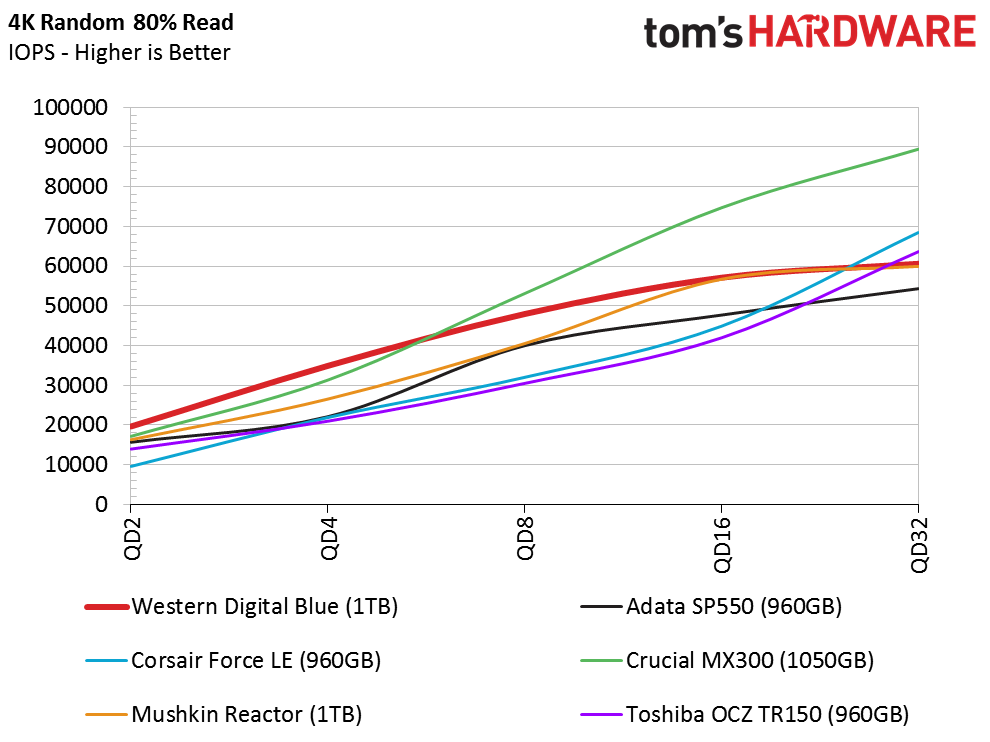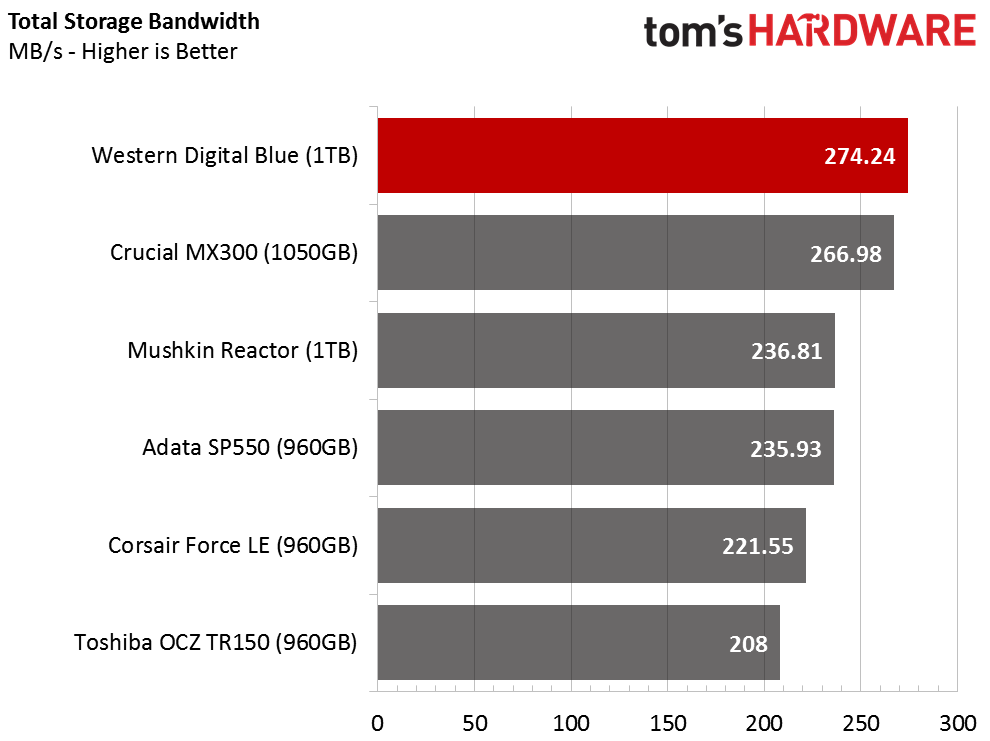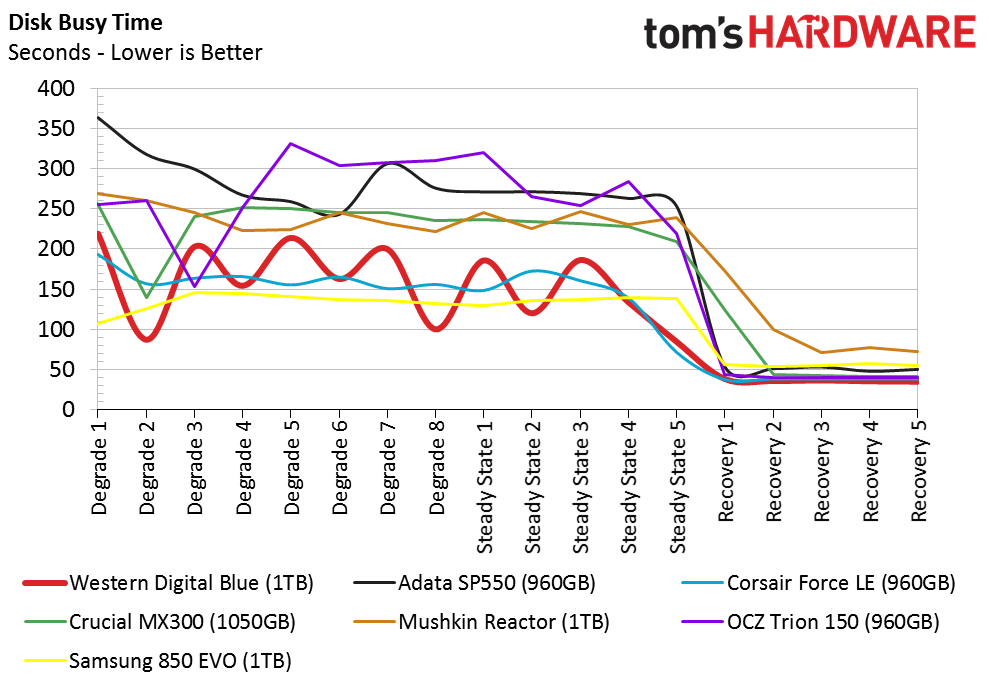Western Digital Blue SSD Review
Why you can trust Tom's Hardware
Comparisons & Benchmarks
Comparison Products
We recently took a deep look at the current state of low-cost 1TB SATA SSDs and came away with a few conclusions. The Samsung 850 EVO is no longer a viable entrant in our entry-level SSD charts because the 1TB model now retails for more than $300. The drive has moved from its position between the entry-level and mainstream segments and squarely into the premium category. The two most popular SATA SSDs ever manufactured, the 850 Pro and Extreme Pro, are now in the new upper tier where the entry-level NVMe SSDs reside.
At the time of this review (using Newegg pricing), we identified five low-cost products that compete against the new Western Digital Blue 1TB SSD. According to the company, the new Blue 1TB has an MSRP of $299.99. The WD Blue and the Crucial MX300 use the new Marvell Dean SSD controller. The MX300 pairs the controller with Micron's new 384Gbit 3D TLC flash.
The Corsair Force LE and OCZ TR150 (formally Trion 150) use a version of Toshiba and Phison's S10 8-channel controller. Both use Toshiba 15nm TLC NAND flash. The Adata SP550 and Mushkin Reactor both use SMI 4-channel controllers. The Adata utilizes Sk Hynix 16nm TLC NAND, and the Reactor is the only SSD in the test pool with MLC flash.
Sequential Read Performance
To read about our storage tests in-depth, please check out How We Test HDDs And SSDs. Four-corner testing is covered on page six of our How We Test guide.
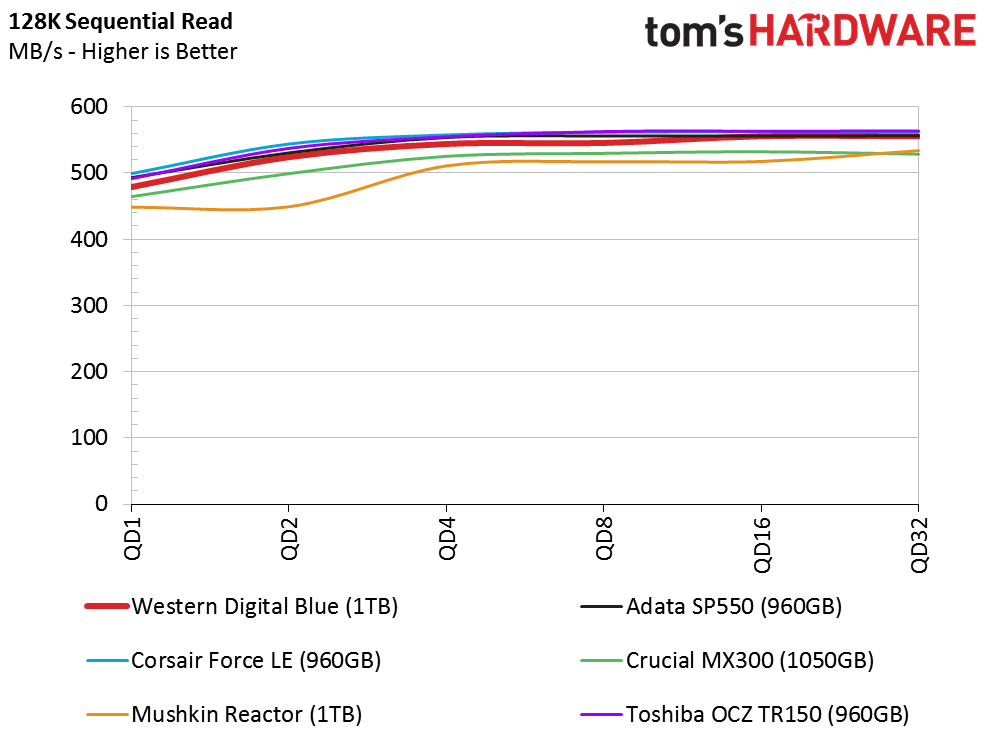

All of the products in the test pool deliver exceptional sequential read performance. 3-bit per cell TLC doesn't have any issues reading back from the flash at high speeds. The new Blue's performance is in the leading group at the top of the chart throughout most of the queue depths. The Blue achieves 524 MB/s at QD2, which is down 20MB/s from the Force LE that leads the group of low-cost 1TB class SSDs.
Sequential Write Performance
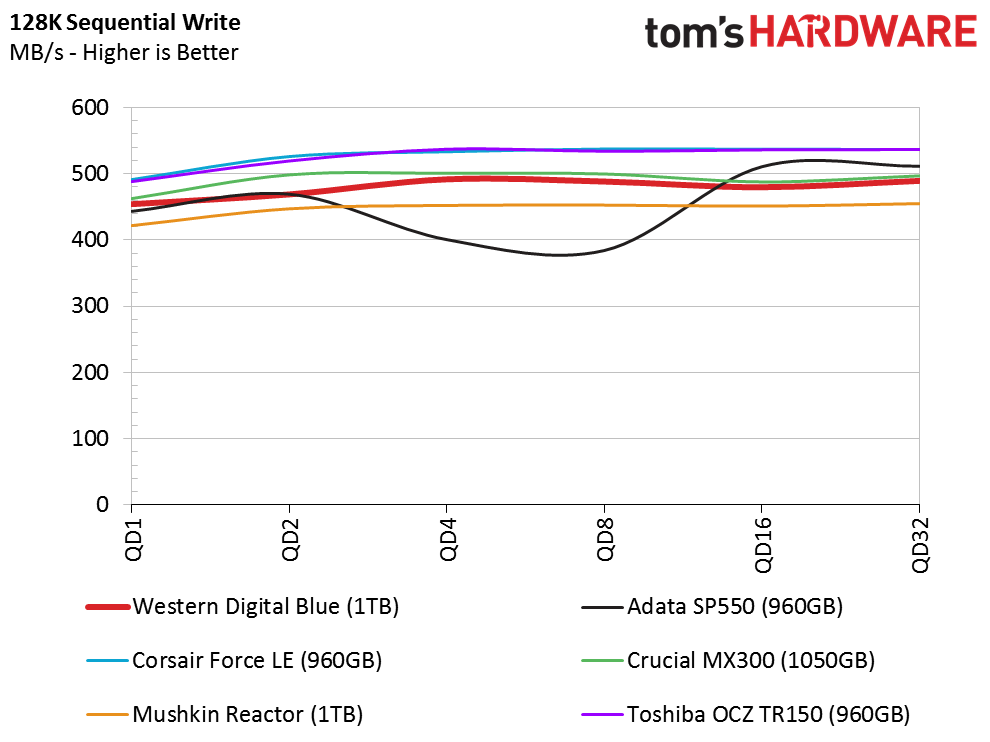
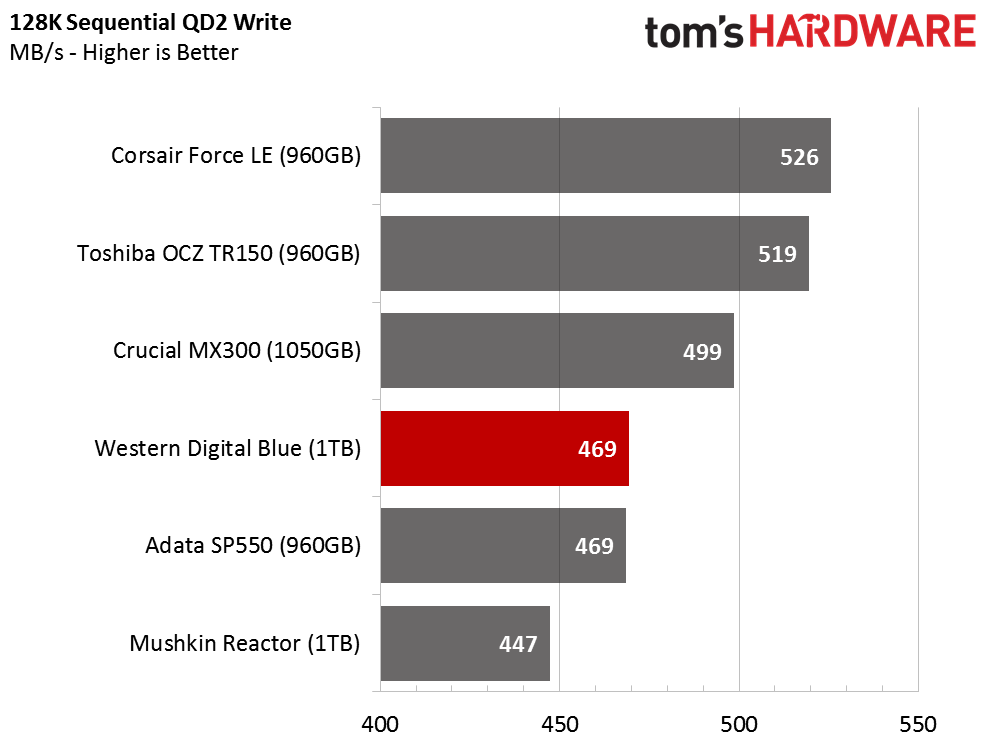
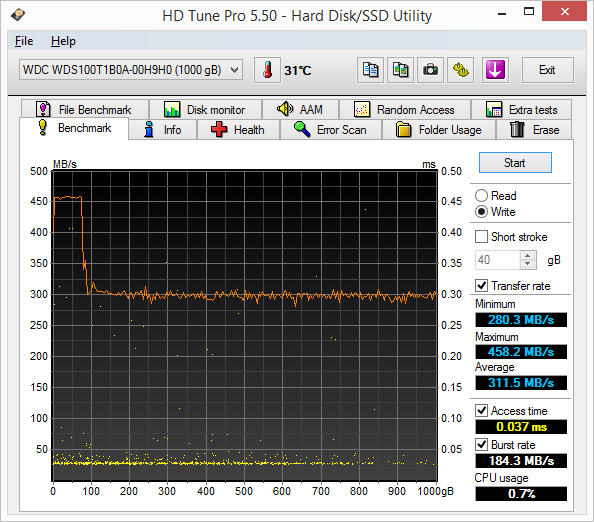
All of the TLC-based drives in this review, with the exception of the Adata SP550, use some form of direct-to-die write algorithm. The enhanced write method allows the drive to stop writing to the SLC buffer after it is full. Instead, it writes directly to the TLC without waiting for the SLC buffer to flush. The technique improves performance, but it also creates more wear on the NAND.
Western Digital didn't provide a lot of technical information about the Blue's dynamic cache system. We suspect it's some form of SanDisk's nCache 2.0, or perhaps a newer version with subtle improvements.
Get Tom's Hardware's best news and in-depth reviews, straight to your inbox.
Our sequential write test is long enough to sample both SLC cache and native TLC performance during the 128KB sequential workload. We use HD Tune Pro to measure the performance of both types of NAND at a single queue depth, which is representative of the performance you will see during a large file transfer. When the SLC buffer is active, the 128KB write performance is just above 450MB/s. The buffer size is dynamic, and we measured around 80 GB of SLC space on an empty Blue 1TB. As you populate the drive with data, the buffer shrinks. The native TLC sequential write performance measures around 300MB/s.
Random Read Performance
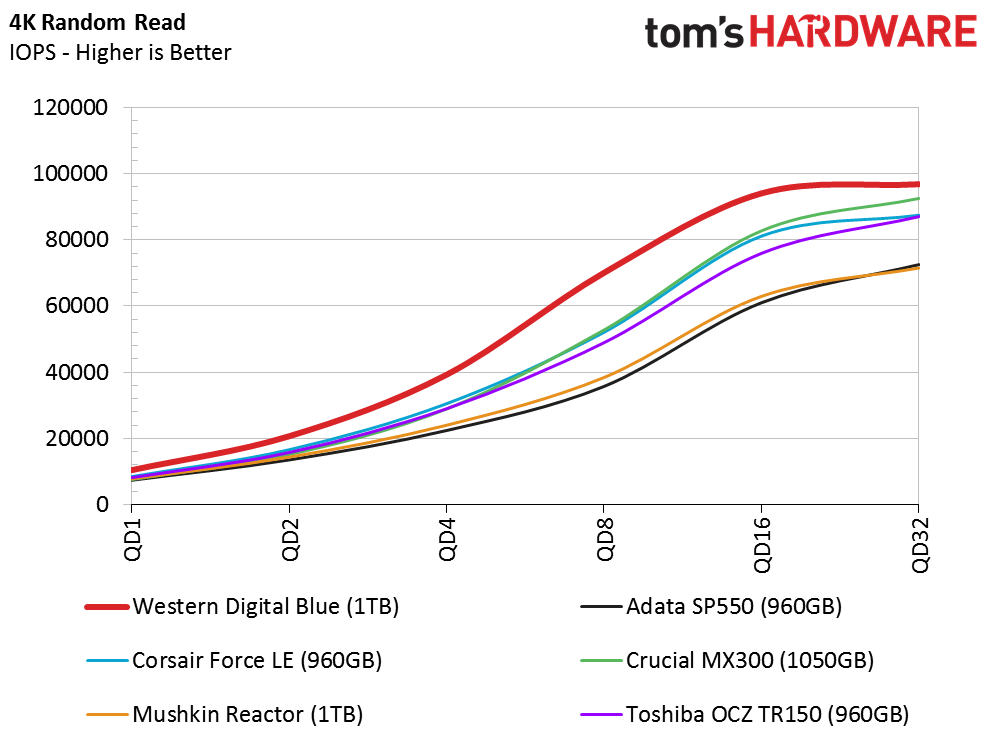
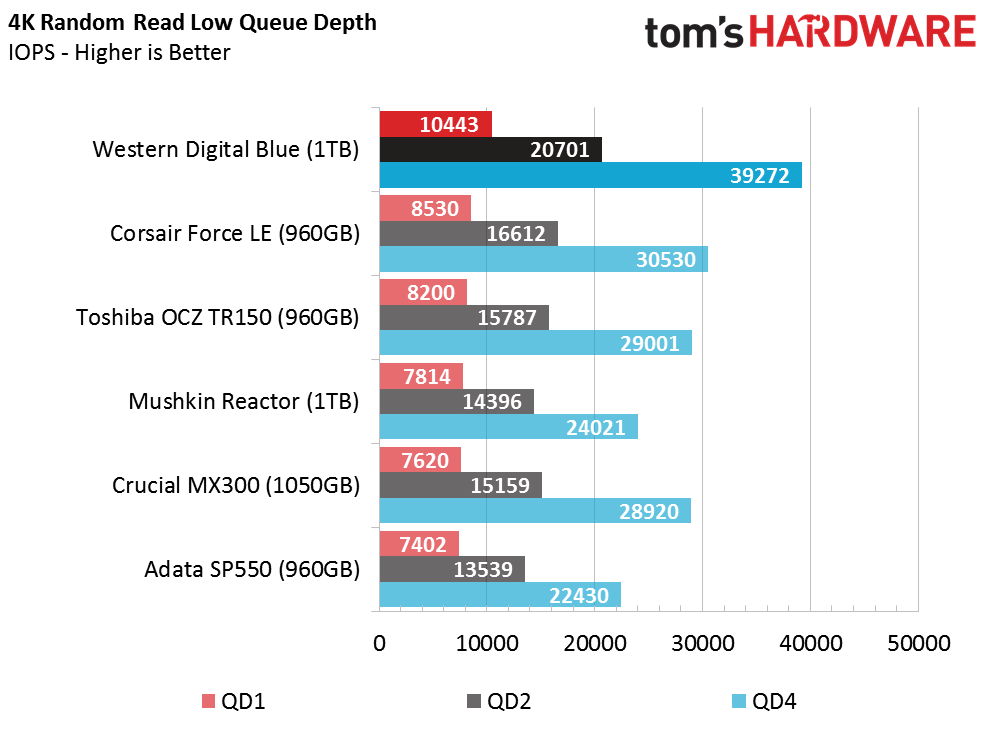
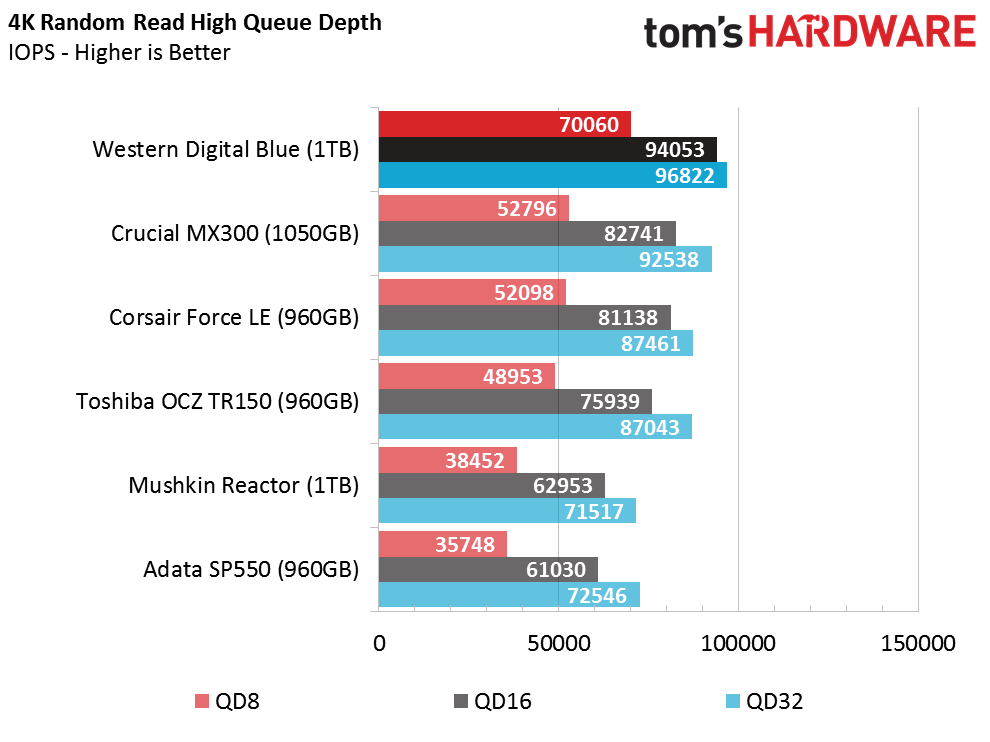
We didn't expect the Western Digital Blue to deliver 10,000 random read IOPS at queue depth 1, which changes the game completely. The SanDisk X400 didn't break the 10,000 IOPS mark, and to date, the Samsung 850 EVO is the only TLC-based SSD to reach this high mark. The Blue joins a very small club of SATA SSDs that have surpassed this important threshold. Even some entry-level NVMe SSDs we've tested can't reach 10,000 IOPS at QD1.
The chart shows the Blue outperforming the other products by a hefty margin across the entire queue depth range. Due to this is discovery, we will add the Samsung 850 EVO 1TB to some of the application tests later in this review to see how the Blue compares with one of the most popular SATA SSDs.
Random Write Performance
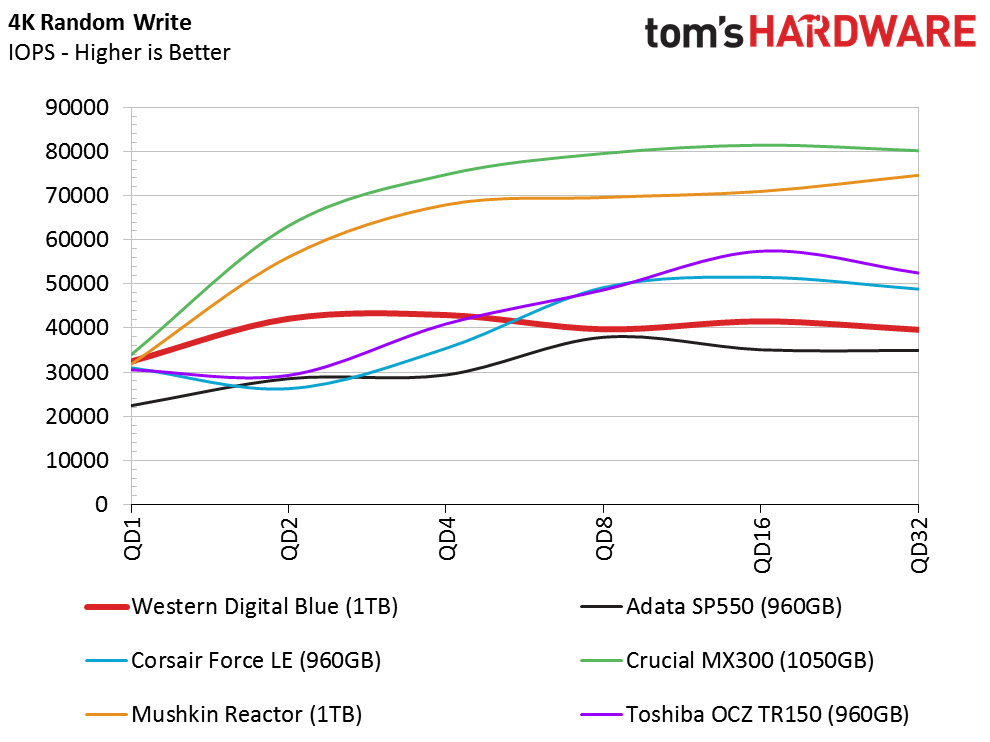


The WD Blue doesn't provide random write performance in the same exciting manner, but it still gets the job done at low queue depths. The MX300 with the same Marvell 4-channel controller (but with 3D NAND) scales a little better as we increase the queue depth. SSDs are so fast that it's difficult to stack commands without heavy multitasking, so the constrained random writes beyond queue depth 2 are nearly irrelevant for real-world use.
80 Percent Mixed Sequential Workload
We describe our mixed workload testing in detail here, and describe our steady state tests here.
The performance isn't exceptional during the mixed sequential workload, but it is consistent and features a nice increase at each step up the queue depth scale.
80 Percent Mixed Random Workload
The Blue delivers the highest performance during the low-QD mixed random test. The MX300 starts to overtake the Blue at queue depth 8 and higher, but at that point, the workload is too heavy to matter for consumer level workloads.
Sequential Steady-State
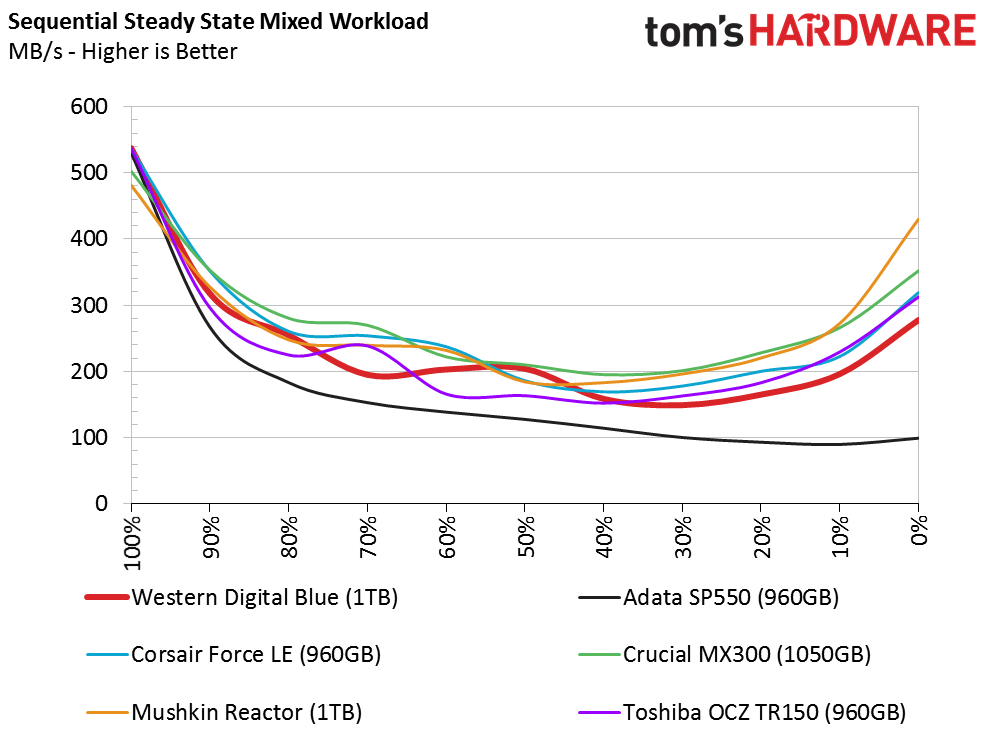
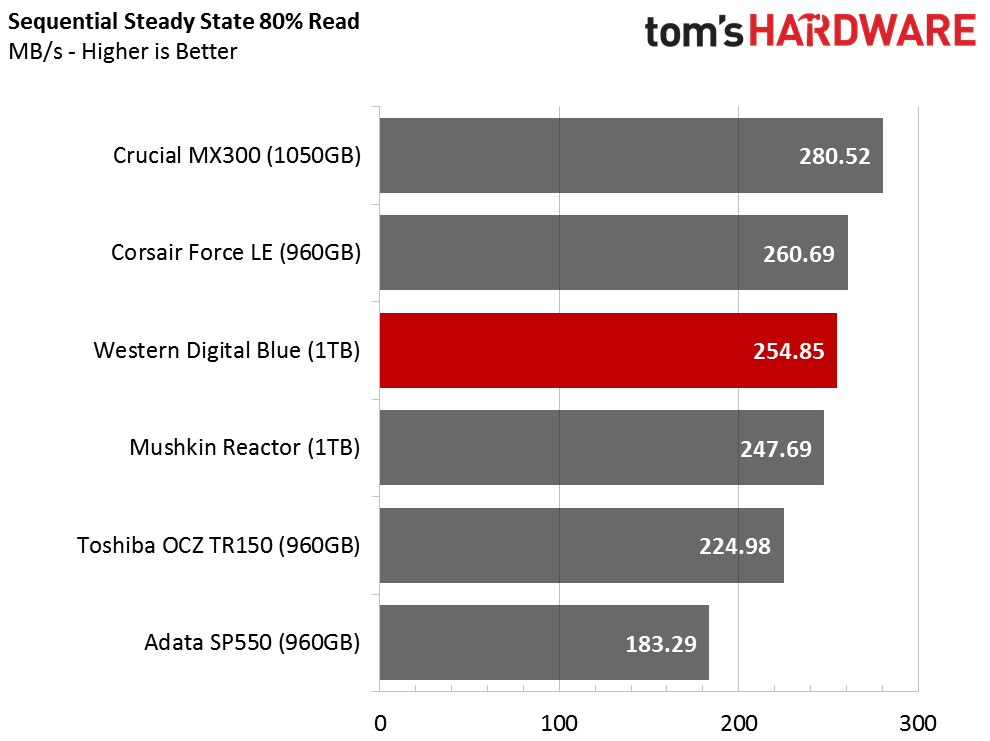
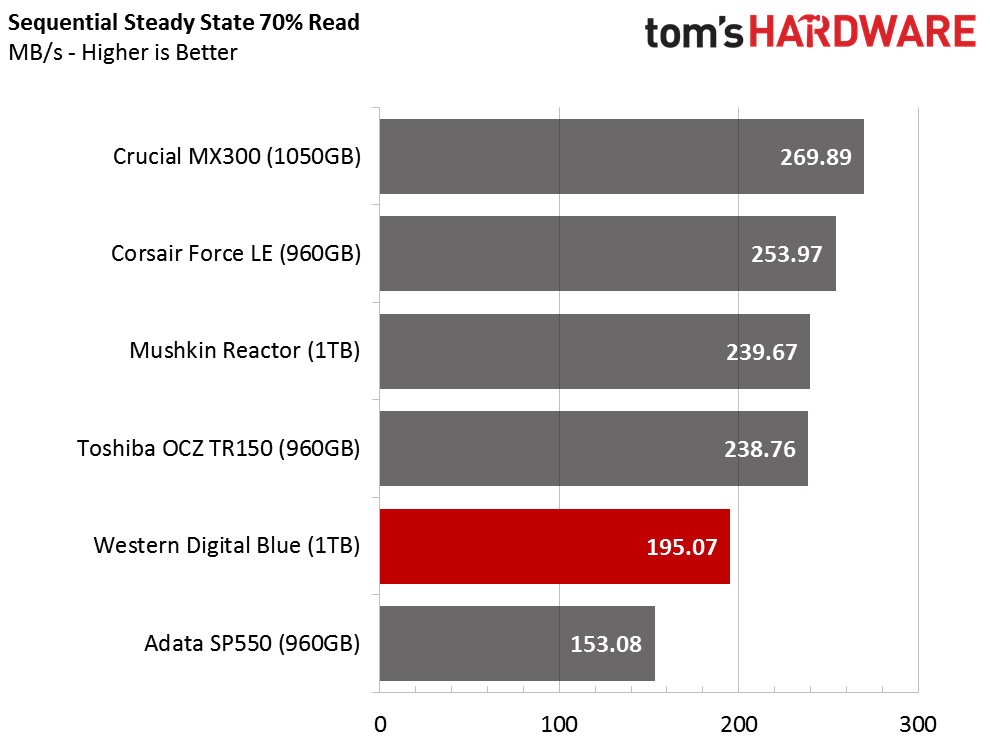
None of the SSDs in the test pool were designed for steady-state workloads. The Blue has enough endurance to satisfy a heavy sequential write environment and high enough performance in mixed workloads to make it a viable option for a budget video edit workstation. We still recommend a professional drive for that task, though.
Random Steady-State
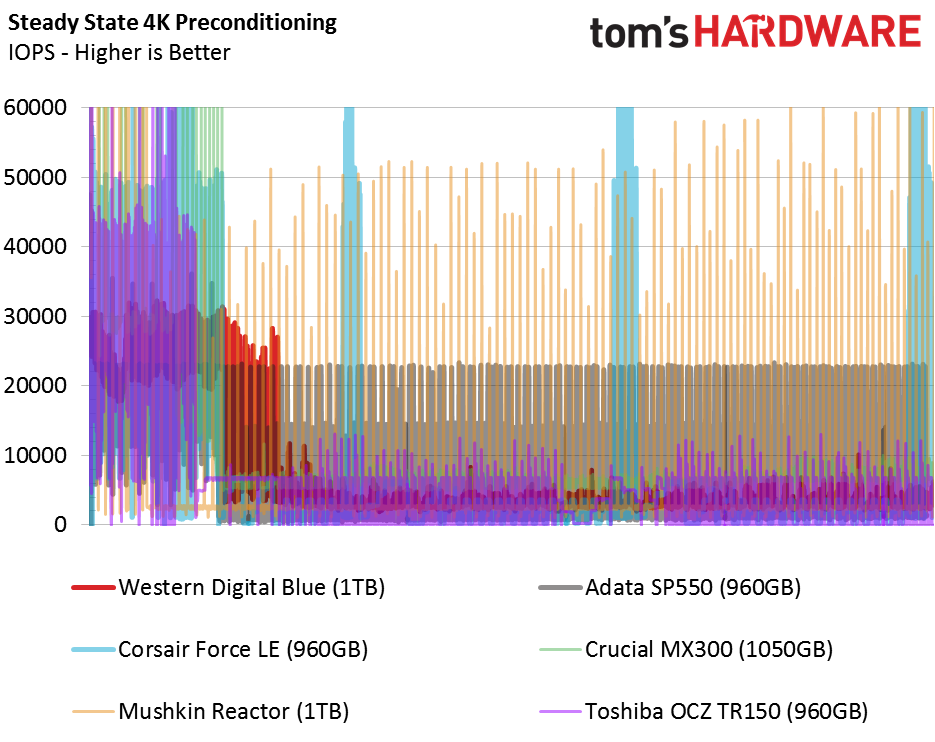

The Blue delivers consistent, but low, random steady-state performance. We wouldn't recommend this product for a consumer RAID array behind the Intel PCH.
PCMark 8 Real-World Software Performance
For details on our real-world software performance testing, please click here.
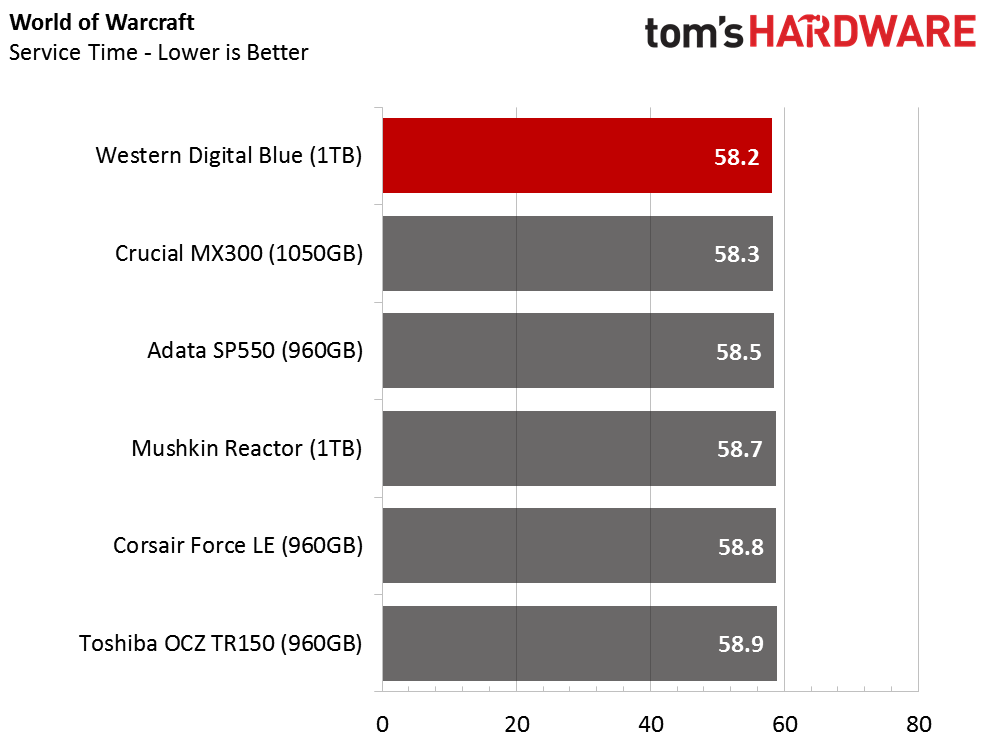
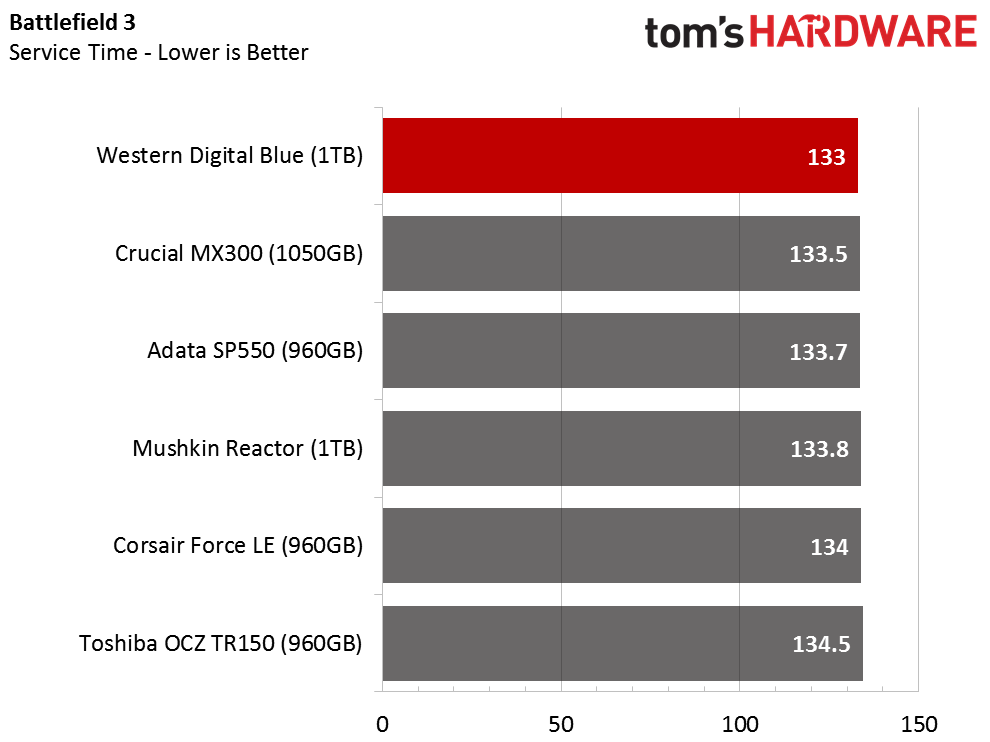
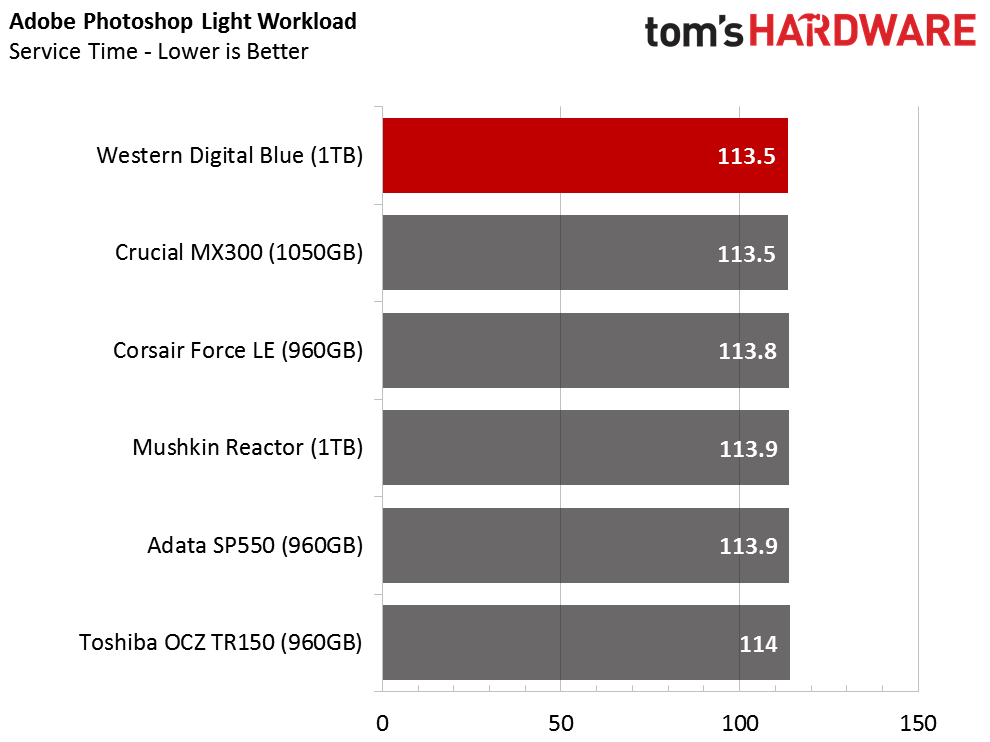


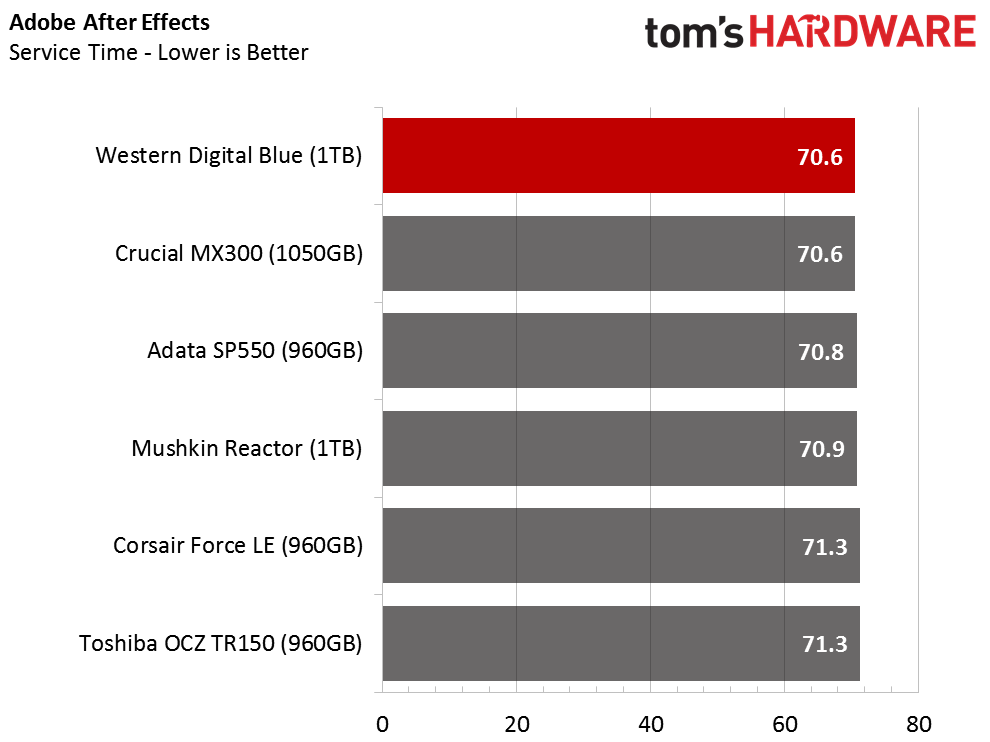
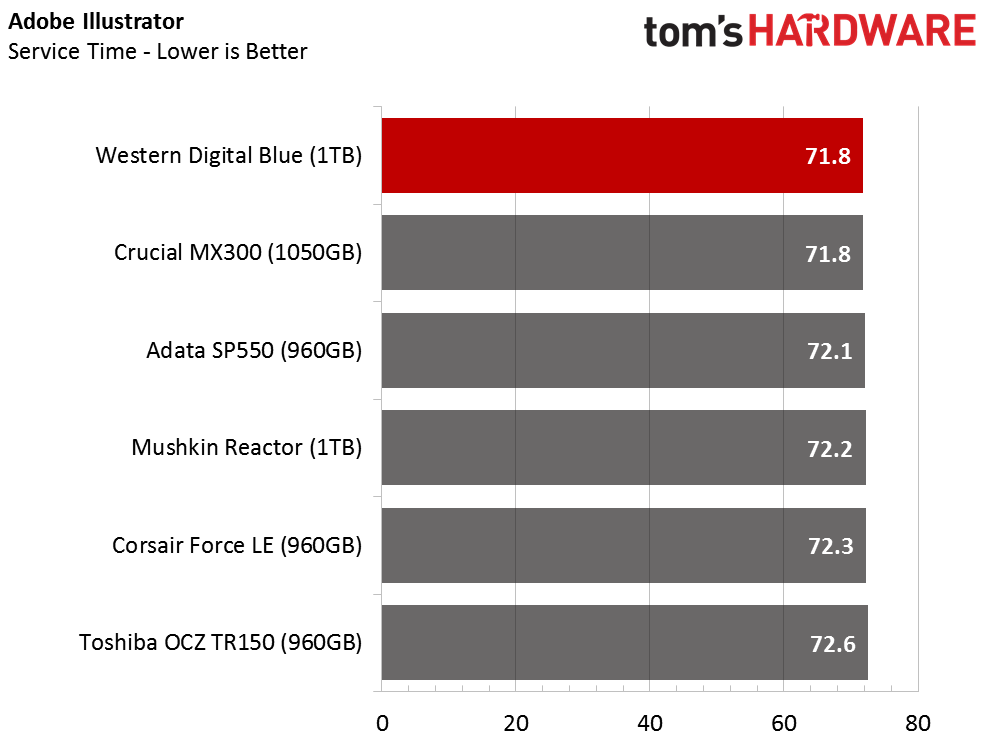

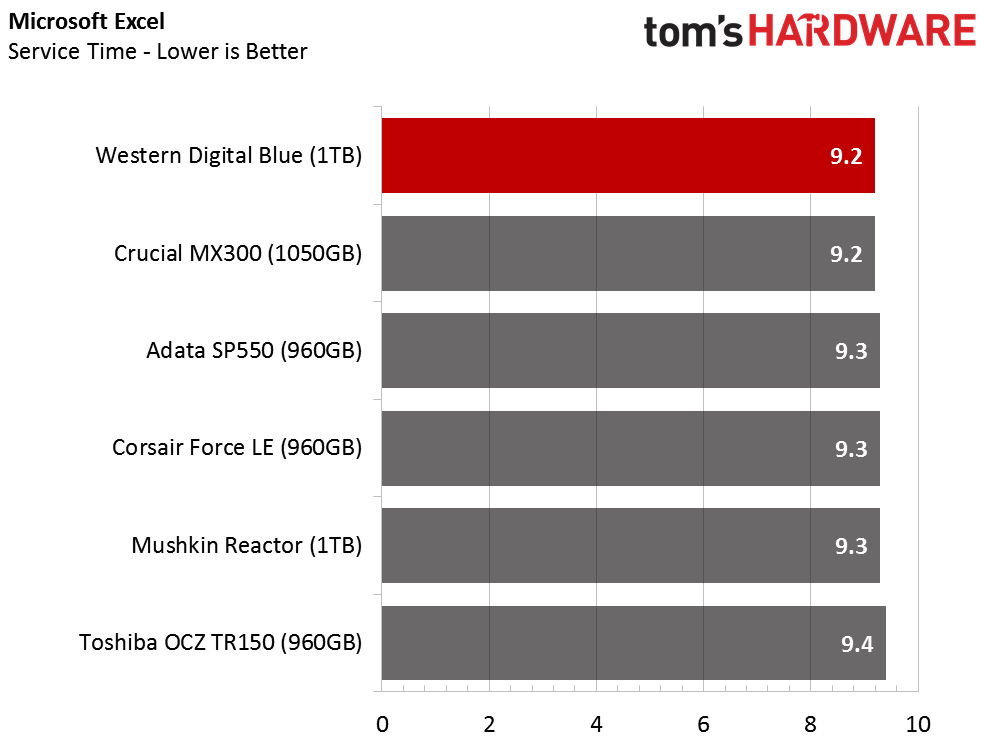
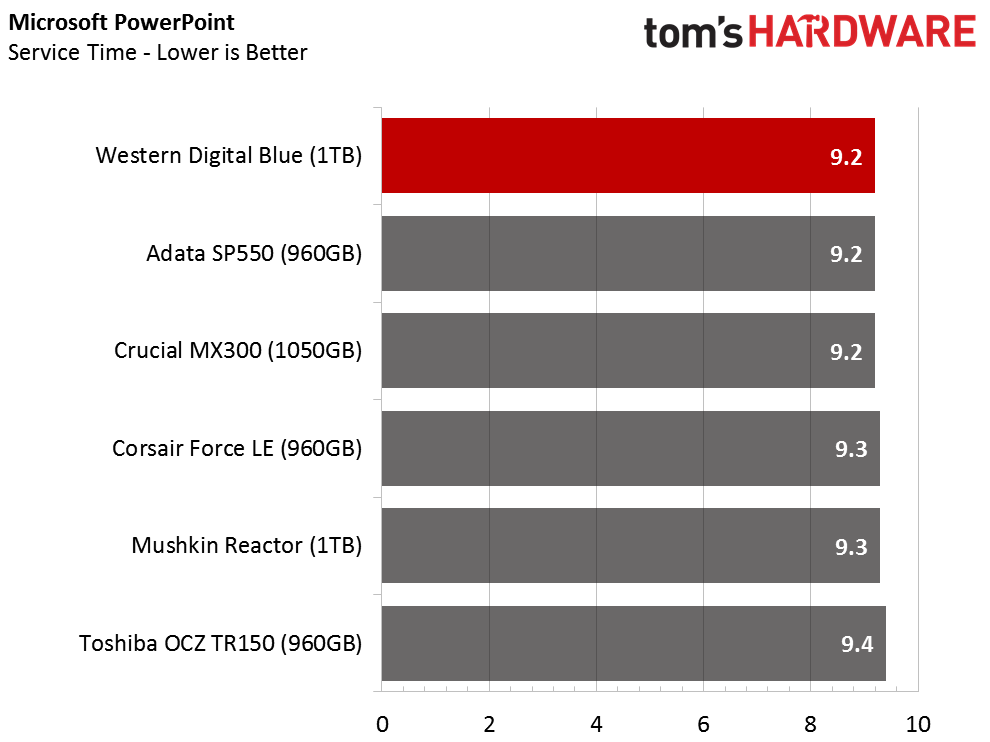
The Western Digital Blue outperforms many of the other products in the chart in nearly every test. Later in the review, we will discuss pricing in detail.
Application Storage Bandwidth
We combine the results and average them into a tidy throughput score. The Blue outperforms the MX300 1050GB by a small margin.
PCMark 8 Advanced Workload Performance
To learn how we test advanced workload performance, please click here.
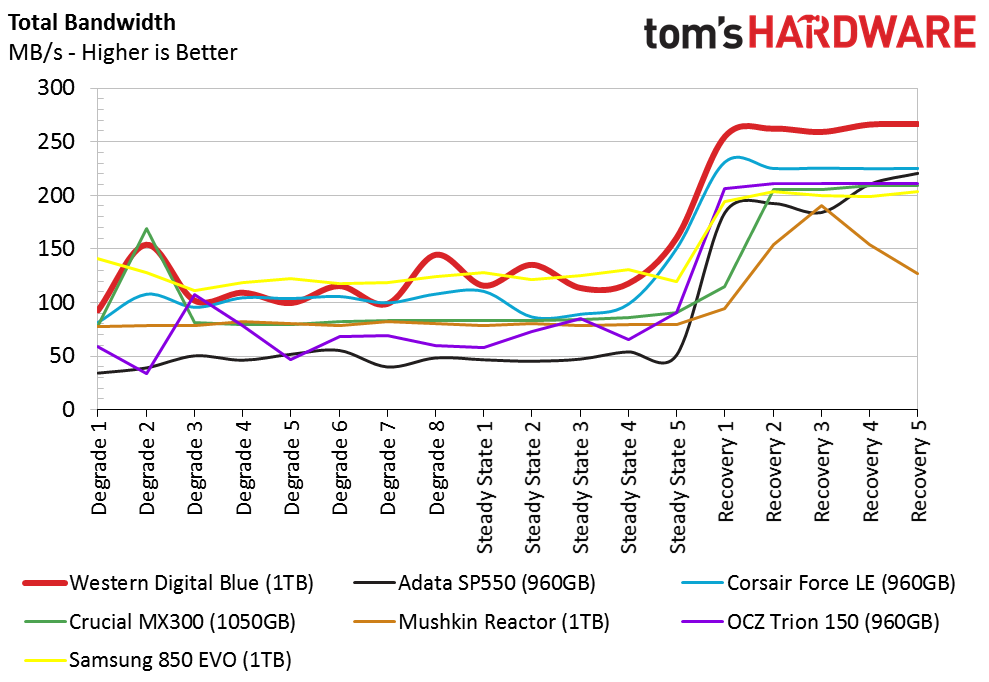
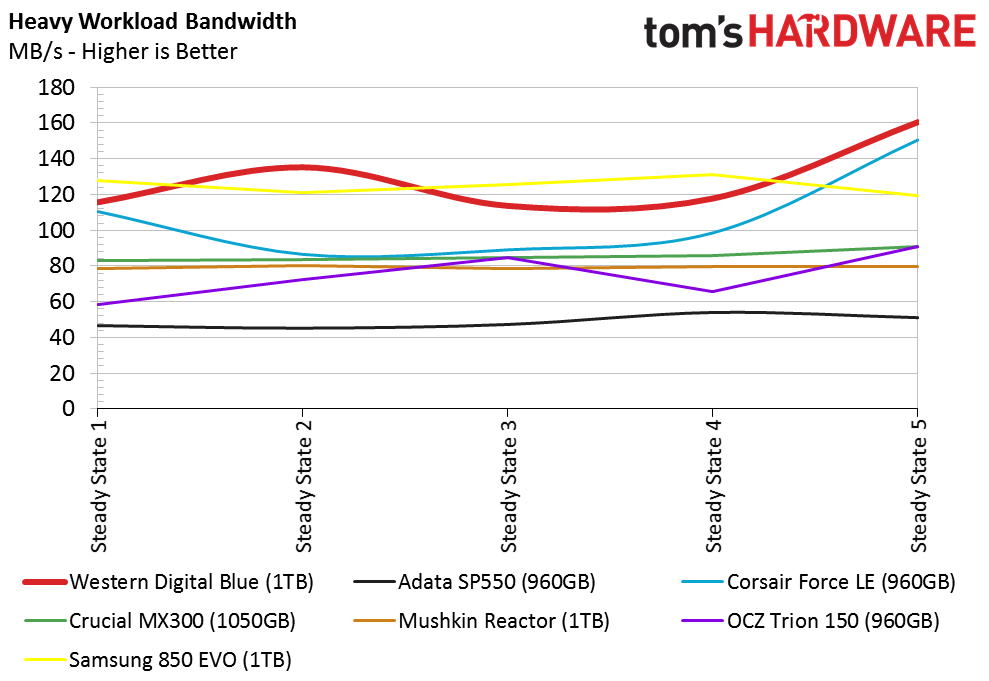

We've included the Samsung 850 EVO 1TB in these tests. The mainstream performance leader has aged well, but newer TLC-based products have caught up in the important recovery state of these tests. We didn't expect the Western Digital Blue to be as good as it is, but the numbers clearly show the Blue outperforms the 850 EVO by a fair margin.
Total Service Time
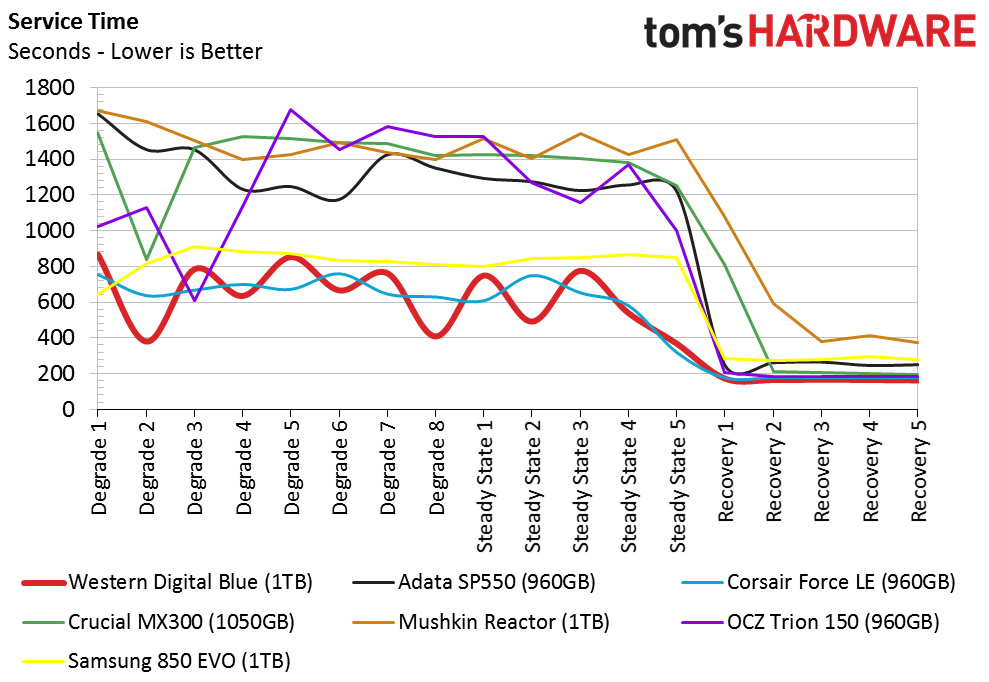
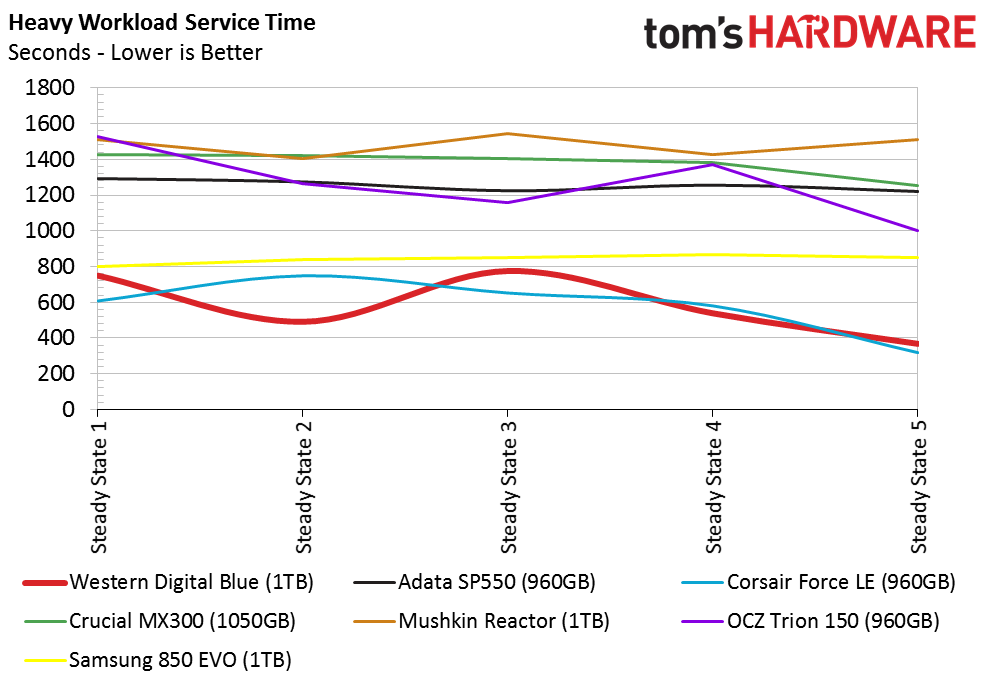
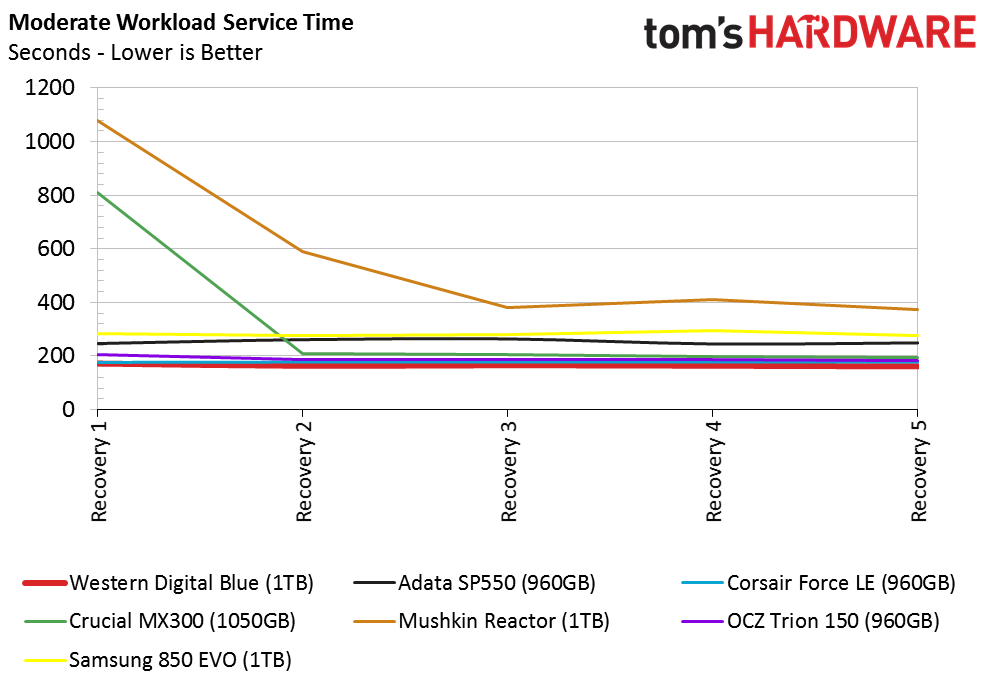
The Western Digital Blue also delivers slightly better service times during the recovery stages, but the heavy tests reveal an even wider difference between the two.
Disk Busy Time
The disk busy time test reveals that the 850 EVO still works less than the Blue in many of the test runs, so we don't expect the Blue overtake the EVO in the notebook battery life test. The two products (we can now call them the performance leaders) are still very close.
Notebook Battery Life
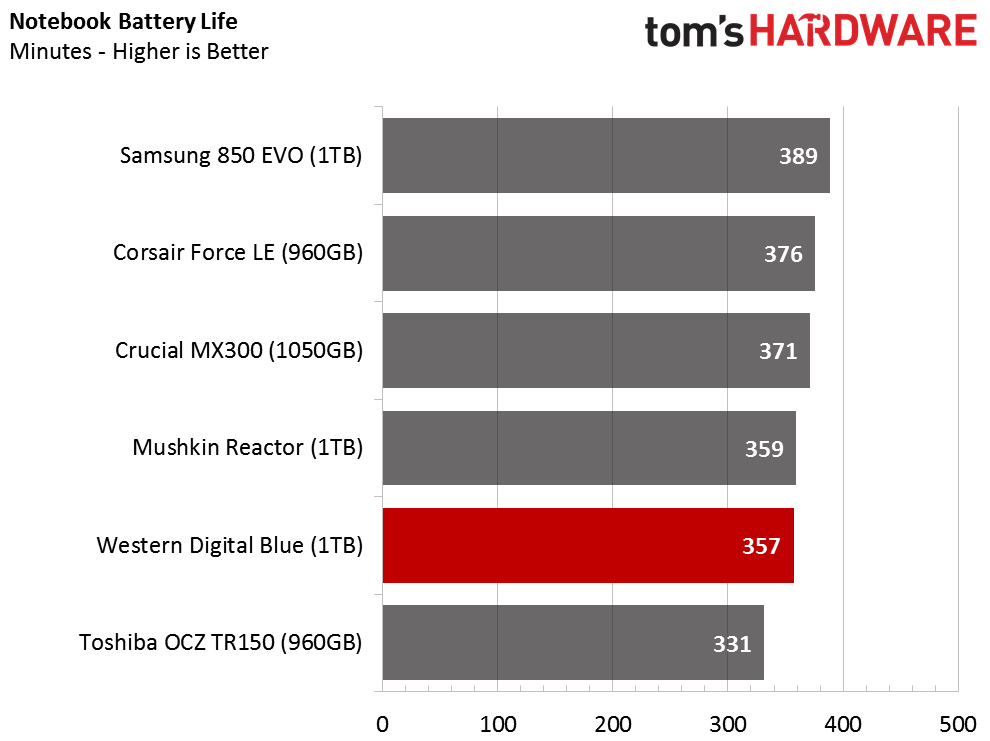
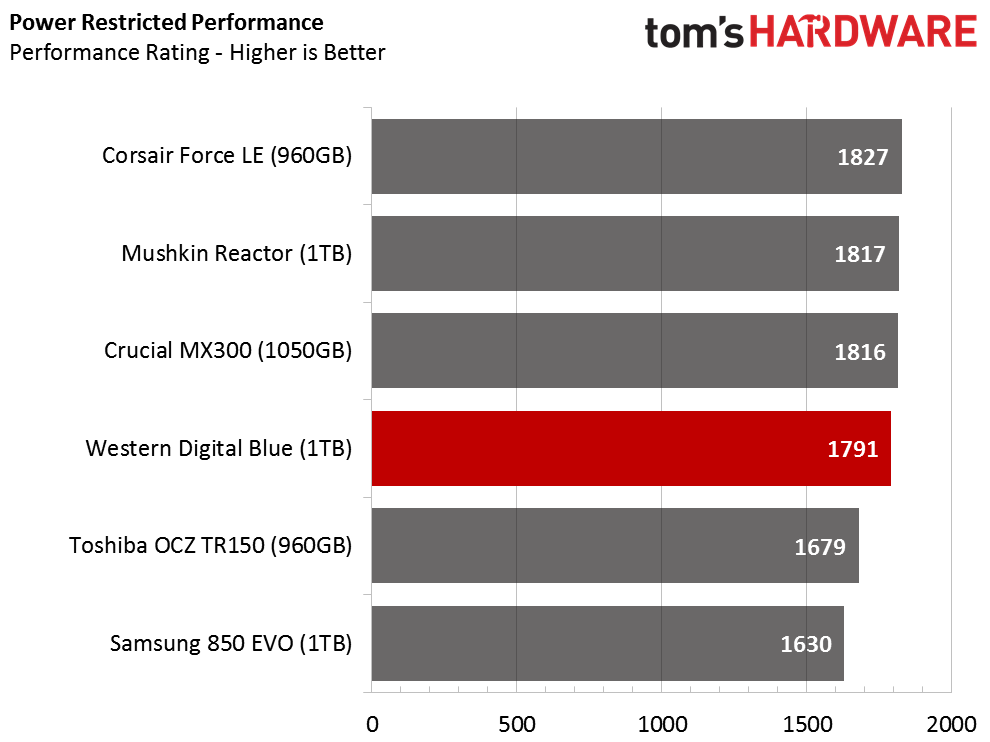
The Western Digital Blue didn't do too badly in our notebook battery life test, but it could benefit from some additional optimization. Power consumption is an important test for business travelers who spend a lot of time without a power outlet.
We use Lenovo Y700 gaming notebooks as a single standardized platform for both SATA and NVMe products. The Y700 is a very powerful notebook that Lenovo did not design for long battery use. The results are very constrained on this platform compared to systems designed to provide long battery life. The results on a business-focused system, like the Lenovo T460, would increase the separation between the SSDs.

Chris Ramseyer was a senior contributing editor for Tom's Hardware. He tested and reviewed consumer storage.
-
lugi20 WD Lists it for $299, Newegg selling it for $299, Amazon has it for $279 --- I think you can update your review. It performs nicely but there are much better values out there.Reply -
RealBeast Agreed, overpriced at $299. I'd go with an EVO. Sounded almost too good to be true, and turns out that it was.Reply -
WFang Yeah the talk about prices in the article is confusing all the while the Amazon link shows it priced way higher than (any of) the article prices sprinkled around in the text. What gives?Reply -
CRamseyer The review will need several changes. We are working on it now. Below you can see the pricing information we received from Western Digital. We even had a conversation, that included talk about pricing, within the last 24 hours.Reply
• MSRP for all new Blue and Green capacity sizes
o WD Blue 250 GB $79.99, 500 GB $139.99 and 1TB $199.99 USD MSRP - WD Green has not been determined yet as it won’t be shipping until later this quarter.
